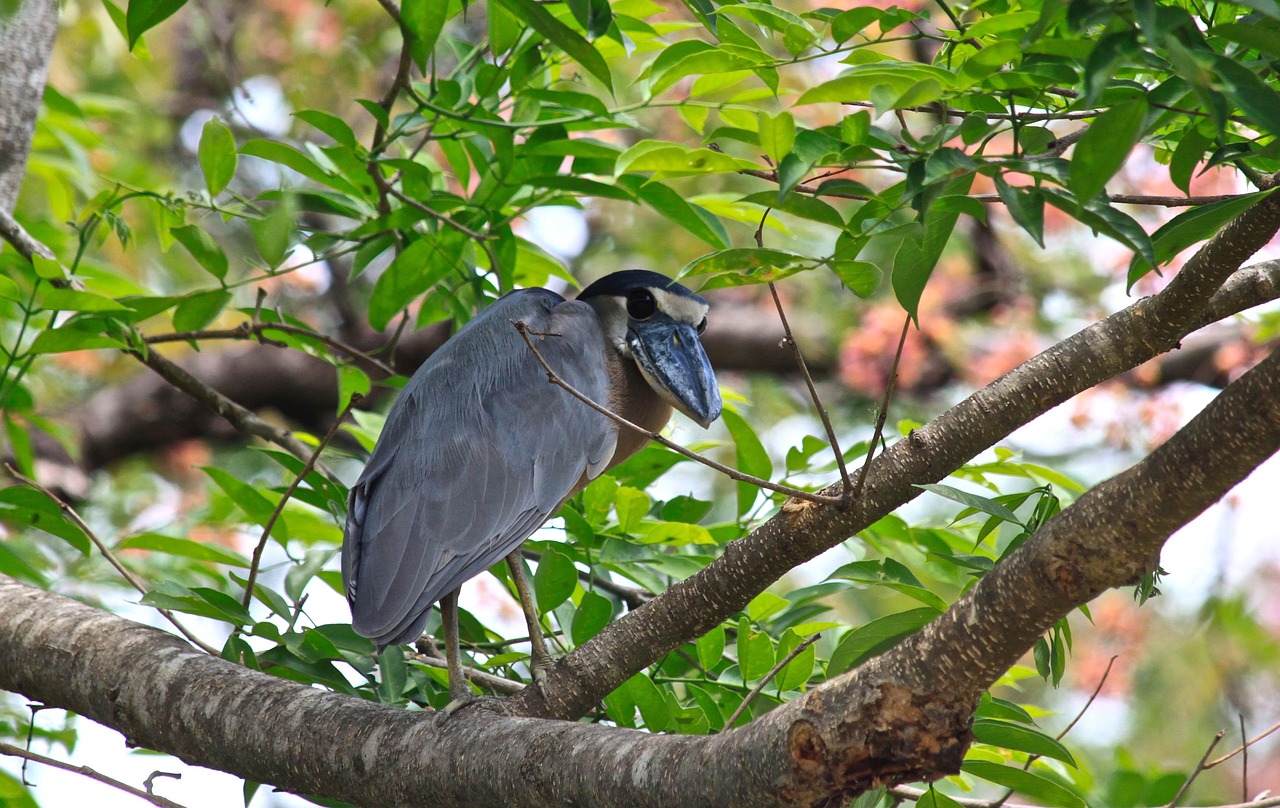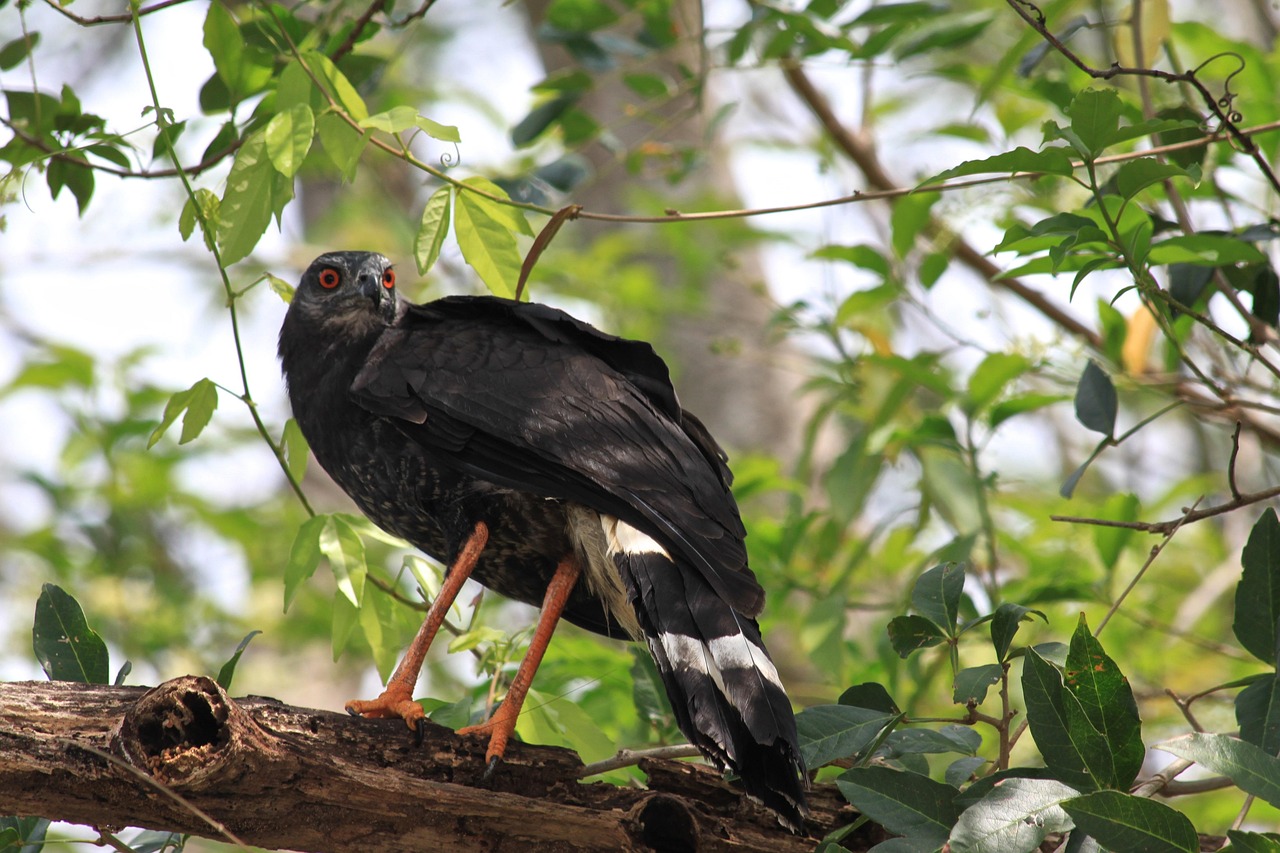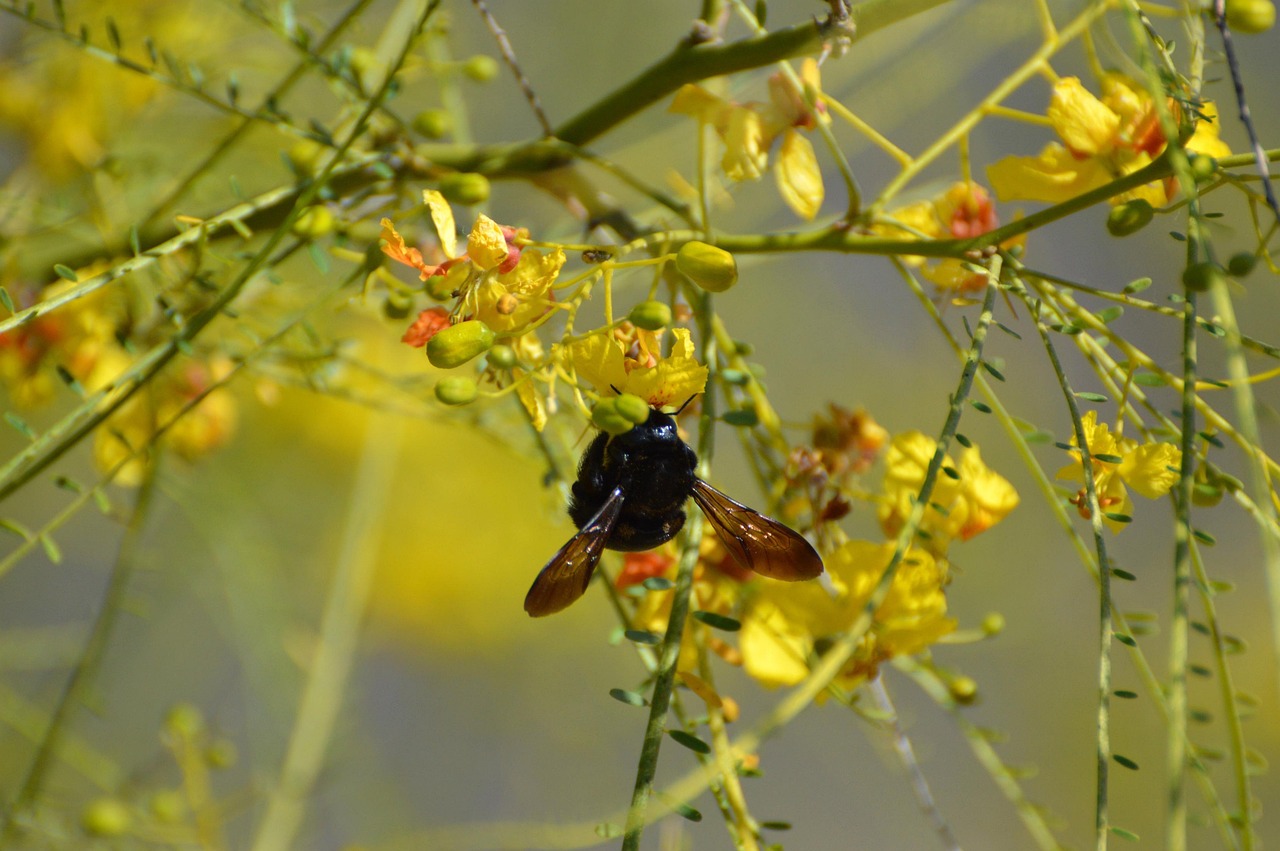Palo Verde trees, well-suited for dry southwestern gardens, exhibit a moderate growth rate, typically ranging from 12 to 24 inches per year under optimal conditions. Their growth can be influenced by factors such as soil quality, water availability, and sunlight. With proper care, these trees can thrive, providing shade and beauty in arid landscapes.
The Palo Verde tree is known for its rapid growth rate, typically reaching heights of 15 to 30 feet in dry southwestern gardens within 3 to 5 years. This fast-growing tree thrives in arid conditions, making it an excellent choice for desert landscapes.
The Palo Verde tree, scientifically known as Cercidium floridum, is native to the deserts of the southwestern United States and Mexico. Its name translates to “green stick,” reflecting the tree’s green bark and branches, which perform photosynthesis. This unique adaptation allows the Palo Verde to thrive in environments with limited water resources, making it a popular choice for xeriscaping projects.

In dry southwestern gardens, the growth rate of the Palo Verde tree is influenced by several factors including soil type, water availability, and climate conditions. Understanding these factors can help gardeners optimize the tree’s growth and overall health. The Palo Verde is not only appreciated for its beauty but also for its ability to provide shade and habitat for local wildlife.
Growth Characteristics of the Palo Verde Tree
The Palo Verde tree exhibits distinct growth characteristics that make it suitable for dry landscapes. It is a deciduous tree, shedding its leaves during the hottest months to conserve water. When it comes to growth rate, several key factors play a role:
- Soil Quality: Well-drained sandy or loamy soils promote healthy root development.
- Watering Practices: While drought-tolerant, regular watering during establishment can enhance growth.
- Sunlight Exposure: Full sun exposure encourages faster growth and denser foliage.
- Temperature Range: Thrives in temperatures between 70°F and 100°F.
The Palo Verde tree can grow up to 24 inches per year under optimal conditions. This rapid growth makes it particularly appealing for homeowners looking to add greenery quickly. The tree not only serves as a visual focal point but also helps reduce heat in outdoor spaces.

One notable feature of the Palo Verde tree is its blooming cycle. It produces vibrant yellow flowers during the spring months, often attracting pollinators such as bees and butterflies. This floral display adds aesthetic value while supporting local ecosystems.
Factors Affecting Growth Rate
The growth rate of the Palo Verde tree can be affected by various environmental and care-related factors. Understanding these elements can help gardeners cultivate thriving specimens in their landscapes:
| Factor | Impact on Growth Rate |
|---|---|
| Soil Type | Palo Verde trees prefer well-draining soils. Poorly draining soils can lead to root rot, slowing growth. |
| Water Availability | While drought-tolerant, consistent watering during establishment promotes faster growth rates. |
| Sunlight | Full sun exposure maximizes photosynthesis, leading to quicker height and canopy expansion. |
| Pests and Diseases | Infestations or diseases can stunt growth. Regular monitoring is essential for maintaining health. |
Gardeners should also consider the placement of the Palo Verde tree within their landscape design. Proper spacing from other plants allows for adequate light and airflow, which are crucial for healthy growth. Additionally, providing mulch around the base can help retain moisture while minimizing weeds that compete for nutrients.

In summary, the Palo Verde tree stands out as an excellent option for dry southwestern gardens due to its fast growth rate and adaptability. By understanding how soil quality, water availability, sunlight exposure, and pest management contribute to its growth, gardeners can ensure successful cultivation of this remarkable tree.
Watering Techniques for Optimal Growth
Watering practices are essential when cultivating Palo Verde trees, especially in dry southwestern gardens. Although these trees are drought-tolerant, proper watering during their establishment phase can significantly boost their growth rate. Here are some effective watering techniques:
- Deep Watering: Water the tree deeply and infrequently. This encourages deep root growth, which is crucial for long-term health.
- Drip Irrigation: Installing a drip irrigation system can ensure that water reaches the root zone efficiently without excessive evaporation.
- Timing: Water early in the morning or late in the afternoon to minimize water loss from evaporation.
- Mulching: Applying a thick layer of mulch around the base can help retain soil moisture and regulate temperature.
For newly planted Palo Verde trees, it is advisable to water them every week for the first few months. After they are established, this can be reduced to once every two to three weeks depending on rainfall and temperature.

Soil Amendments to Enhance Growth
The soil in dry southwestern gardens may require amendments to promote healthy growth for Palo Verde trees. While these trees can adapt to various soil types, certain adjustments can create optimal conditions. Consider the following soil amendments:
- Organic Matter: Incorporating compost or well-rotted manure improves soil structure and fertility.
- Pearlite or Sand: Adding perlite or sand increases drainage, preventing waterlogging and root rot.
- pH Testing: Testing soil pH helps determine if additional amendments are necessary. Palo Verde trees prefer slightly acidic to neutral soil (pH 6.0 to 7.0).
It is recommended to mix these amendments into the planting hole before placing the tree. This allows for immediate access to nutrients as the roots begin to establish.
Pest and Disease Management
Palo Verde trees are generally resilient, but they can still fall victim to pests and diseases that may affect their growth. Awareness and proactive management can help maintain tree health. Common pests include:
- Aphids: These small insects can cause leaf curling and yellowing. They can be managed with insecticidal soap or neem oil.
- Pine Bark Beetles: These beetles can bore into the bark, weakening the tree. Regular inspection for signs of infestation is crucial.
- Spider Mites: These tiny pests thrive in dry conditions and can lead to stippled leaves. Increasing humidity around the tree can help deter infestation.
In addition to pests, Palo Verde trees may be susceptible to diseases such as root rot and leaf spot. Proper watering practices and good air circulation help prevent these issues. If you notice any signs of disease, consult with a local gardening expert for treatment options.
Seasonal Care Considerations
Caring for Palo Verde trees involves adapting your maintenance practices to seasonal changes. Each season presents unique challenges and opportunities for promoting growth:
Spring
Spring is a critical time for growth as the tree emerges from dormancy. Key care actions include:
- Monitor soil moisture levels, ensuring adequate watering as temperatures rise.
- Prune any dead or damaged branches to encourage new growth and improve airflow.
Summer
The summer heat can stress the tree. Consider the following:
- Increase watering frequency during peak heat, especially if rainfall is low.
- Apply mulch to conserve moisture and keep roots cool.
Fall
As temperatures drop, prepare the tree for dormancy:
- Reduce watering frequency as growth slows down.
- Add a layer of mulch to protect roots from colder temperatures.
Winter
Palo Verde trees are dormant in winter, but care is still important:
- Avoid excessive watering during this period to prevent root rot.
- Check for any signs of pests or diseases that may have developed during fall.
By adjusting care routines according to the seasons, gardeners can ensure that their Palo Verde trees remain vibrant and healthy throughout the year.
Companion Planting with Palo Verde Trees
Companion planting is a gardening strategy that enhances growth, repels pests, and improves the overall health of plants. When it comes to Palo Verde trees, selecting the right companion plants can create a thriving ecosystem in dry southwestern gardens. Here are some beneficial companion plants:
- Desert Marigold (Baileya multiradiata): This native plant thrives in similar conditions and attracts pollinators.
- Red Yucca (Hesperaloe parviflora): Drought-tolerant and visually appealing, it complements the Palo Verde’s structure.
- Agave: Agave plants are resilient and can coexist with Palo Verde trees without competing for resources.
- Sage (Salvia spp.): Sage varieties attract beneficial insects while thriving in arid conditions.
By incorporating these companion plants, gardeners can not only enhance the aesthetic appeal of their landscapes but also promote biodiversity. This can lead to healthier Palo Verde trees and a more vibrant garden environment.
Mulching Practices for Water Conservation
Mulching is a vital practice for maintaining soil moisture and temperature around Palo Verde trees. Proper mulch can significantly improve growth rates and overall health. Here are some effective mulching techniques:
- Organic Mulch: Materials such as wood chips, bark, or straw break down over time, enriching the soil.
- Inorganic Mulch: Gravel or landscape fabric can effectively retain moisture while preventing weed growth.
- Thickness: Apply a layer of mulch 2 to 4 inches thick around the base of the tree, ensuring it does not touch the trunk.
Regularly replenishing mulch as it decomposes will maintain its effectiveness. This practice not only conserves water but also suppresses weeds that may compete with the Palo Verde for nutrients.
Understanding the Importance of Sunlight
Palo Verde trees thrive in full sunlight, which is crucial for their growth and health. Understanding sunlight requirements can help ensure optimal development:
- Full Sun Exposure: Aim for at least 6 to 8 hours of direct sunlight per day for best results.
- Shade Tolerance: While they can tolerate some shade, prolonged periods without adequate sunlight may inhibit growth.
- Location Selection: When planting, choose locations that are not overshadowed by taller structures or other trees.
Providing ample sunlight allows the Palo Verde tree to photosynthesize efficiently, leading to robust growth and vibrant foliage.
Nurturing Soil Health
The health of the soil directly impacts the growth rate of Palo Verde trees. Implementing practices that enhance soil quality can lead to better nutrient availability and root development. Consider the following methods:
- Regular Testing: Conduct periodic soil tests to assess nutrient levels and pH. This information can guide your amendment choices.
- Cover Crops: Planting cover crops during the off-season can improve soil structure and prevent erosion.
- Crop Rotation: Rotate planting locations annually to prevent nutrient depletion and pest buildup in the soil.
By prioritizing soil health, gardeners can create a fertile environment that supports rapid growth in Palo Verde trees.
Palo Verde Tree Varieties
Several varieties of Palo Verde trees cater to different landscape preferences and environmental conditions. Understanding these varieties can help gardeners choose the best option for their specific needs:
| Variety | Description | Height |
|---|---|---|
| Palo Verde (Cercidium floridum) | This species features vibrant yellow flowers in spring and is highly drought-resistant. | 15-30 feet |
| Blue Palo Verde (Parkinsonia florida) | This variety has a bluish-green bark and produces clusters of yellow flowers, attracting pollinators. | 20-40 feet |
| Mexican Palo Verde (Parkinsonia aculeata) | A thorny version with similar flowering characteristics, suitable for arid landscapes. | 10-30 feet |
Selecting the right variety of Palo Verde can enhance both the visual appeal and functional benefits in your garden, providing shade and habitat for wildlife while contributing to the landscape’s overall resilience.
Environmental Benefits of Palo Verde Trees
Palo Verde trees offer numerous environmental benefits, making them a valuable addition to dry southwestern gardens. Their unique adaptations and characteristics contribute positively to local ecosystems. Here are some key environmental advantages:
- Carbon Sequestration: As with all trees, Palo Verde trees absorb carbon dioxide, helping to combat climate change by storing carbon in their biomass.
- Soil Erosion Prevention: The extensive root systems of these trees help anchor the soil, reducing erosion and maintaining soil structure.
- Habitat Creation: Palo Verde trees provide shelter and food for various bird species, insects, and small mammals, enhancing local biodiversity.
- Shade Provision: Their broad canopies offer shade, reducing the temperature in surrounding areas and creating cooler microclimates for other plants.
By planting Palo Verde trees, gardeners can not only enhance their landscapes but also contribute to environmental sustainability in arid regions.
Caring for Mature Palo Verde Trees
Once established, Palo Verde trees require less maintenance than many other tree species. However, some care is still necessary to ensure longevity and health:
- Periodic Pruning: While these trees naturally shed branches, occasional pruning can help maintain shape and remove any dead or damaged limbs.
- Water Management: Even established trees benefit from occasional deep watering during prolonged dry spells to support their overall health.
- Pest Monitoring: Keeping an eye on common pests and diseases can prevent potential infestations that could impact tree health.
By following these care tips, gardeners can enjoy flourishing Palo Verde trees for many years, enhancing the beauty and functionality of their outdoor spaces.
Landscape Design Ideas Featuring Palo Verde Trees
Palo Verde trees can serve as stunning focal points in landscape design. Here are some ideas for incorporating them into your garden:
- Desert Oasis: Combine Palo Verde trees with succulents, cacti, and native wildflowers to create a vibrant desert landscape that thrives in dry conditions.
- Shade Gardens: Use the shade provided by larger Palo Verde trees to plant shade-tolerant plants such as ferns or ground covers that thrive in lower light conditions.
- Wildlife-Friendly Gardens: Plant flowering companions around the base to attract pollinators and create a habitat for birds and beneficial insects.
- Pathways and Borders: Position Palo Verde trees strategically along pathways or borders to guide visitors through the garden while providing visual interest.
These design ideas allow gardeners to maximize the beauty and ecological benefits of Palo Verde trees while creating inviting outdoor spaces.
Final Thoughts
The Palo Verde tree stands out as an exceptional choice for dry southwestern gardens due to its rapid growth rate, adaptability to arid conditions, and numerous environmental benefits. By understanding the various factors that influence its growth, including soil quality, water management, and seasonal care, gardeners can cultivate healthy specimens that thrive in challenging environments.
This tree not only enhances the beauty of landscapes with its striking appearance and vibrant blooms but also plays a crucial role in supporting local ecosystems. Its ability to provide shade, improve soil quality, and create habitats for wildlife underscores its value in sustainable gardening practices.
As you consider incorporating Palo Verde trees into your garden, remember the importance of companion planting, proper watering techniques, and regular maintenance. By doing so, you will create a thriving outdoor space that reflects the unique beauty of the southwestern landscape while contributing positively to the environment.
Ultimately, the Palo Verde tree embodies resilience and adaptability, making it a symbol of life in arid regions. Embracing this remarkable species can lead to a more vibrant and sustainable garden that flourishes year-round.
